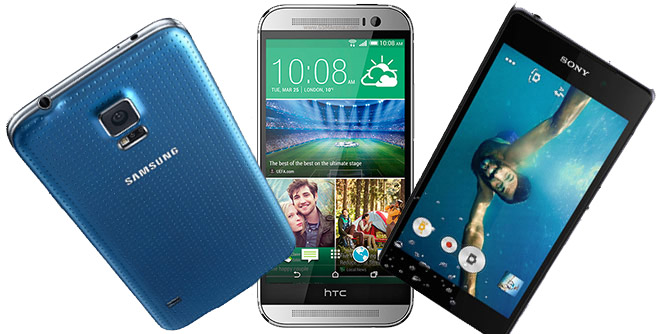When HTC announced the successor to the HTC One last week, many were intrigued by its dual rear cameras. Throughout the series of leaks before the unveiling, many people speculated as to what the cameras could do. Perhaps HTC decided to have a proper high-resolution camera, and a second “UltraPixel” camera. But instead the truth is that it was simply used to adjust the point of focus on the photo after it was taken (on top of adding a couple of effects).

Hardly a feat, considering that the Galaxy S5 and Nokia Lumia lineup can do it as well, without the need for two cameras.
And then there’s the S5, with its fingerprint sensor on the home button, and heart rate monitor on the back. Samsung has its focus set on promoting a healthy lifestyle, and good for them. But placing a heart rate monitor on the back of your flagship device probably isn’t the best idea. Especially when it bumps up the price to SGD$1068.
While these additions to HTC’s and Samsung’s latest devices may seem cool, we can’t help but think that they’re just be a gimmick. Who cares about the rear dual cameras when the front facing one has a higher resolution? (I still can’t get over how ironic that is). How often is the average user going to use the heart rate monitor? Not much, surely.
So the real question is: are we running out of ideas? In our desperate attempt to make something new, are we just going to put in random, useless functions into our smartphones?
In the past, the latest flagship smartphone was all about how fast its processor was going to be, how high the screen resolution will get. When Apple unveiled the iPhone 4, its “retina display” of 330ppi was a feat.
But now, with quad core 1.5Ghz, 312ppi smartphones selling for $169 off contract, high-end manufacturers are finding trouble well, innovating. So they try their best to come up with something that they find “innovative”. They waterproof their phones. Add in front-facing dual speakers and give it a fancy name. Give the phone a curved display.
And when they run out of ideas they pull out something from an old book. The fingerprint sensor was around even back in the days of the Motorola Atrix. Apple took that, improved it, called it “TouchID”, and placed it on the iPhone 5s.
But the iPhone 5s is great, isn’t it? TouchID has a lot more practical use to it than simply unlocking your phone. You can use it to confirm app purchases and make payments via PayPal online. The 64-bit processor on the 5s is also great. It essentially future-proofed the 5s for years to come. So it seems that some of the latest “innovations” are useful.
The thing is this: anything can be considered “innovation”, so long as it’s new and has never been done before. But innovations with no practical use are just “gimmicks”. It seems like we’re running out of ideas here.
TouchID? Useful. 64 bit processor? Future proof. Waterproofing? Really neat.
But a dual 4MP camera just to have special post-capture refocusing? A curved screen with no functional purpose? A heart rate monitor? Don’t think so.
While Sony and Apple have stayed true to innovating on practical fronts that matter to the average consumer, Samsung and HTC have decided to innovate for the sake of being different. And that’s a cause for concern.

It’s not that the HTC One (M8) and Galaxy S5 are bad, gimmicky phones. They’re pretty darn good. But we’re just not all too sure that an ordinary consumer would be happy paying exorbitant prices for some extra feature that they’re not going to use.
And in a world where manufacturers such as Xiaomi are selling phones with LG G2 specs in a premium HTC-ish metal casing for as low as SGD$419 off contract, manufacturers better start innovating for real.
And not just innovating for the sake of being different.

